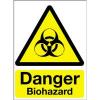Before our daily cleaning and desinfiction we rinse our equipment and floor with hot water. Since we haven`t got enough hot water "from the tap" we heat approximately 1000 liters cold tapwater - this water are transmitted to a tank in productionarea (seperate piping) and from this tank our lab takes microbiological samples which have been too high according to our legal limits (valid for cold water - 20 cfu/g at 37 oC).
The water is heated to 65-70 oC - temp at use min 50 oC.
For getting the higher level of germs to a lowe level, I am thinking cleaning and desinficting piping and tank, then flushing piping over several times with hot water, final rinse with cold water - and applying a sign to ht tank "always open bottom -tap after rinsing". Then I, hopefully, can be sure that the tank will be emtied every day.
But I believe that our spec for hot water generally will be higher than for cold - and as all equipment is cleaned and desinfected with cold water afterwards, I mean that I can make a spec higher than 20 cfu/g for out hot water.
Please your opinion - and if you know any documantation applicable for my problem please link ![]()
- Home
- Sponsors
- Forums
- Members ˅
- Resources ˅
- Files
- FAQ ˅
- Jobs
-
Webinars ˅
- Upcoming Food Safety Fridays
- Upcoming Hot Topics from Sponsors
- Recorded Food Safety Fridays
- Recorded Food Safety Essentials
- Recorded Hot Topics from Sponsors
- Food Safety Live 2013
- Food Safety Live 2014
- Food Safety Live 2015
- Food Safety Live 2016
- Food Safety Live 2017
- Food Safety Live 2018
- Food Safety Live 2019
- Food Safety Live 2020
- Food Safety Live 2021
- Training ˅
- Links
- Store ˅
- More















